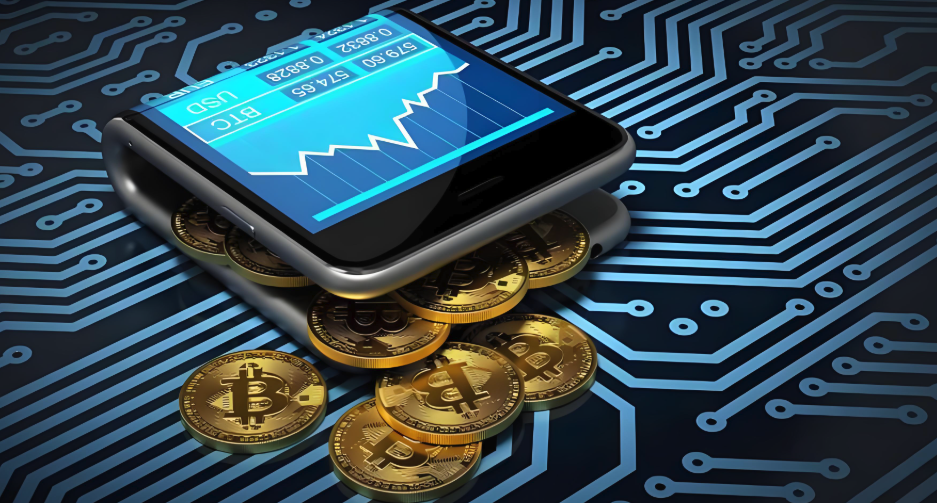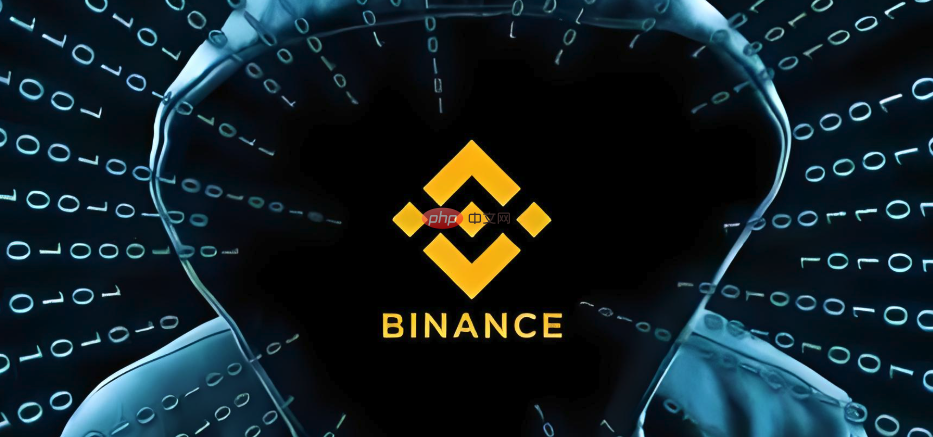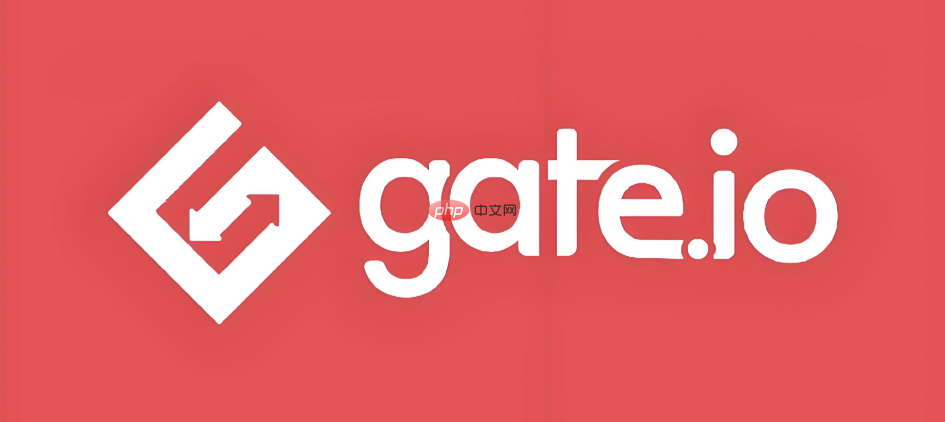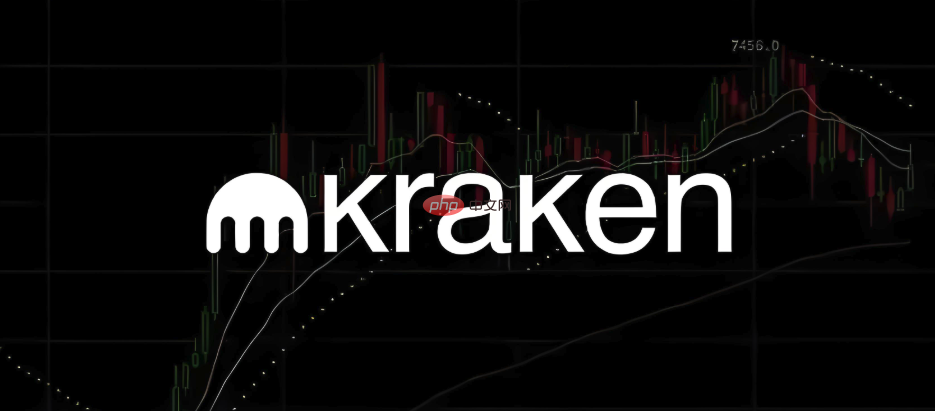 web3.0
web3.0
 List of the top ten cryptocurrency exchange apps in the world. The latest recommended cryptocurrency trading software in 2025.
List of the top ten cryptocurrency exchange apps in the world. The latest recommended cryptocurrency trading software in 2025.
List of the top ten cryptocurrency exchange apps in the world. The latest recommended cryptocurrency trading software in 2025.
Jan 15, 2025 pm 06:17 PMTop ten list of currency exchange APPs, providing users with safe and convenient digital asset trading services. The top ten exchanges on the list are: 1. OKX: Strong overall strength, large trading volume, rich currencies, and low transaction fees. 2. Binance: It has a large number of currencies, high transaction volume, strong liquidity, and supports multiple languages. 3. Huobi: It has a long history, large transaction volume, rich currency types, and high transaction fees. 4. KuCoin: Focus on altcoin transactions, with a large number of currencies, small transaction volume, and low transaction fees. 5. Gate.io: Low transaction fees, large number of currencies, and multi-language support. 6. Crypto.com: Supports multiple cryptocurrencies, offers VISA cards, and has higher transaction fees. 7. BitMEX: Focus on Bitcoin contract trading, with high leverage and low handling fees. 8. Kraken: High security, regulatory compliance, and high transaction fees. 9. Bybit: Focus on contract trading, with high leverage and low transaction fees. 10. Gemini: High security, regulatory compliance, and relatively small transaction volume.

Coin Circle Exchange APP Top ten list
First place: OKX
- Features:Strong overall strength, large trading volume, currency Rich species and low transaction costs.
- Advantages: Founded in 2017, it has more than 30 million registered users, its transaction volume has long been at the forefront of the industry, and it supports multiple transaction modes such as spot, contract, and mining.
- Disadvantages: The APP interface is slightly complicated and may not be friendly to novices.
Second place: Binance
- Features: Large number of currencies, high transaction volume, strong liquidity, and support for multiple languages.
- Advantages: Founded in 2017, with more than 100 million registered users, it is the world's largest cryptocurrency exchange, providing spot, contract, NFT and other diversified trading products.
- Disadvantages: There are many compliance issues and strict restrictions on Chinese users.

Third place: Huobi
- Features: Long history, large transaction volume, rich currency types, and high transaction fees.
- Advantages: Founded in 2013, it is one of the earliest cryptocurrency exchanges in China, supporting multiple trading methods such as spot, contract, and OTC.
- Disadvantages: Affected by policies, there are more restrictions in some countries and regions.
Fourth place: KuCoin
- Features: Focus on altcoin trading, with a large number of currencies, small transaction volume, and low transaction fees.
- Advantages: Founded in 2017, it has more than 8 million registered users, supports spot, contract, lending and other businesses, and is suitable for professional investors to dig for treasure.
- Disadvantages: Low visibility and relatively insufficient liquidity.
Fifth place: Gate.io
- Features: Low transaction fees, large number of currencies, and multiple supports language.
- Advantages: Founded in 2013, it supports a variety of services such as spot, contract, and legal currency transactions, and provides multiple languages ??such as Chinese and English.
- Disadvantages: Liquidity is relatively poor and compliance is lacking.

Sixth place: Crypto.com
- Features: Supports multiple cryptocurrencies, provides VISA card, and has higher transaction fees.
- Advantages: Founded in 2016, with more than 50 million registered users, it provides transactions, lending, NFT and other services, and supports App and VISA card payments.
- Disadvantages: High transaction fees and strict restrictions on Chinese users.
Seventh place: BitMEX
- Features: Focus on Bitcoin contract trading, high leverage, low fees .
- Advantages: Founded in 2014, it is the world's largest Bitcoin contract trading platform, providing high-leverage contract transactions with low handling fees.
- Disadvantages: Only supports Bitcoin contract transactions, which is not friendly to novices.
Eighth place: Kraken
- Features: High security, regulatory compliance, and high transaction fees.
- Advantages: Founded in 2011, it is one of the earliest cryptocurrency exchanges in the world with good regulatory compliance and supports spot and contract transactions.
- Disadvantages: The interface is relatively complicated and the handling fee is high.

Ninth place: Bybit
- Features: Focus on contract trading, with high leverage and low transaction fees.
- Advantages: Founded in 2018, it supports diversified trading products such as spot and contract, and provides high-leverage contract transactions with low handling fees.
- Disadvantages: The number of currencies is relatively small, and the threshold for novice users is high.
Tenth place: Gemini
- Features: High security, regulatory compliance, and relatively small transaction volume.
- Advantages: Founded in 2014, it has good regulatory compliance and supports spot trading and institutional services.
- Disadvantages: The transaction volume is small and the handling fee is high.
Notes on selecting the currency exchange APP
- When choosing a safe and reliable exchange, pay attention to the exchange’s operating qualifications and user reputation.
- Choose an exchange based on your own trading needs and consider factors such as transaction types, handling fees, and liquidity.
- Consider the compliance of the exchange and avoid using exchanges with poor compliance.
- Be careful with leveraged transactions. Although high-leveraged transactions have high returns, they also carry greater risks.
- Pay attention to protecting personal privacy and asset security, and do not easily disclose personal information or hand over private keys.
The above is the detailed content of List of the top ten cryptocurrency exchange apps in the world. The latest recommended cryptocurrency trading software in 2025.. For more information, please follow other related articles on the PHP Chinese website!

Hot AI Tools

Undress AI Tool
Undress images for free

Undresser.AI Undress
AI-powered app for creating realistic nude photos

AI Clothes Remover
Online AI tool for removing clothes from photos.

Clothoff.io
AI clothes remover

Video Face Swap
Swap faces in any video effortlessly with our completely free AI face swap tool!

Hot Article

Hot Tools

Notepad++7.3.1
Easy-to-use and free code editor

SublimeText3 Chinese version
Chinese version, very easy to use

Zend Studio 13.0.1
Powerful PHP integrated development environment

Dreamweaver CS6
Visual web development tools

SublimeText3 Mac version
God-level code editing software (SublimeText3)

Hot Topics
 How to get stablecoin USDT for free_Xiaobai stablecoin USDT obtain guide
Jul 15, 2025 pm 11:51 PM
How to get stablecoin USDT for free_Xiaobai stablecoin USDT obtain guide
Jul 15, 2025 pm 11:51 PM
Yes, you can get USDT for free in the following 5 ways: 1. Participate in airdrop tasks on mainstream exchanges, such as registering and giving away, completing novice tasks, and inviting friends to get rewards; 2. Join the blockchain project community and obtain airdrops through Web3 social platform or Twitter/Discord interaction; 3. Participate in the "test network" activity, register the test chain address and simulate the use of DApp to get incentives; 4. Complete tasks on the cryptocurrency navigation platform to receive novice gift packages, participate in sign-in, lottery and other activities; 5. Interact with the content creation and community, and publish original content to obtain USDT rewards from the project party. At the same time, you need to pay attention to security risks, do not fill in private keys, do not believe in scams, and choose mainstream platforms to participate.
 LayerZero, StarkNet, ZK Ecological Preheat: How long can the airdrop bonus last?
Jul 16, 2025 am 10:06 AM
LayerZero, StarkNet, ZK Ecological Preheat: How long can the airdrop bonus last?
Jul 16, 2025 am 10:06 AM
The duration of the airdrop dividend is uncertain, but the LayerZero, StarkNet and ZK ecosystems still have long-term value. 1. LayerZero achieves cross-chain interoperability through lightweight protocols; 2. StarkNet provides efficient and low-cost Ethereum L2 expansion solutions based on ZK-STARKs technology; 3. ZK ecosystem (such as zkSync, Scroll, etc.) expands the application of zero-knowledge proof in scaling and privacy protection; 4. Participation methods include the use of bridging tools, interactive DApps, participating test networks, pledged assets, etc., aiming to experience the next generation of blockchain infrastructure in advance and strive for potential airdrop opportunities.
 The flow of funds on the chain is exposed: What new tokens are being bet on by Clever Money?
Jul 16, 2025 am 10:15 AM
The flow of funds on the chain is exposed: What new tokens are being bet on by Clever Money?
Jul 16, 2025 am 10:15 AM
Ordinary investors can discover potential tokens by tracking "smart money", which are high-profit addresses, and paying attention to their trends can provide leading indicators. 1. Use tools such as Nansen and Arkham Intelligence to analyze the data on the chain to view the buying and holdings of smart money; 2. Use Dune Analytics to obtain community-created dashboards to monitor the flow of funds; 3. Follow platforms such as Lookonchain to obtain real-time intelligence. Recently, Cangming Money is planning to re-polize LRT track, DePIN project, modular ecosystem and RWA protocol. For example, a certain LRT protocol has obtained a large amount of early deposits, a certain DePIN project has been accumulated continuously, a certain game public chain has been supported by the industry treasury, and a certain RWA protocol has attracted institutions to enter.
 Which is better, DAI or USDC?_Is DAI suitable for long-term holding?
Jul 15, 2025 pm 11:18 PM
Which is better, DAI or USDC?_Is DAI suitable for long-term holding?
Jul 15, 2025 pm 11:18 PM
Is DAI suitable for long-term holding? The answer depends on individual needs and risk preferences. 1. DAI is a decentralized stablecoin, generated by excessive collateral for crypto assets, suitable for users who pursue censorship resistance and transparency; 2. Its stability is slightly inferior to USDC, and may experience slight deansal due to collateral fluctuations; 3. Applicable to lending, pledge and governance scenarios in the DeFi ecosystem; 4. Pay attention to the upgrade and governance risks of MakerDAO system. If you pursue high stability and compliance guarantees, it is recommended to choose USDC; if you attach importance to the concept of decentralization and actively participate in DeFi applications, DAI has long-term value. The combination of the two can also improve the security and flexibility of asset allocation.
 Who is suitable for stablecoin DAI_ Analysis of decentralized stablecoin usage scenarios
Jul 15, 2025 pm 11:27 PM
Who is suitable for stablecoin DAI_ Analysis of decentralized stablecoin usage scenarios
Jul 15, 2025 pm 11:27 PM
DAI is suitable for users who attach importance to the concept of decentralization, actively participate in the DeFi ecosystem, need cross-chain asset liquidity, and pursue asset transparency and autonomy. 1. Supporters of the decentralization concept trust smart contracts and community governance; 2. DeFi users can be used for lending, pledge, and liquidity mining; 3. Cross-chain users can achieve flexible transfer of multi-chain assets; 4. Governance participants can influence system decisions through voting. Its main scenarios include decentralized lending, asset hedging, liquidity mining, cross-border payments and community governance. At the same time, it is necessary to pay attention to system risks, mortgage fluctuations risks and technical threshold issues.
 Is the stablecoin USDT a scam? Is the company behind the stablecoin USDT reliable?
Jul 15, 2025 pm 11:57 PM
Is the stablecoin USDT a scam? Is the company behind the stablecoin USDT reliable?
Jul 15, 2025 pm 11:57 PM
USDT is not a scam, but there are risks. 1. Tether provides liquidity in the crypto market by issuing USDT, a stablecoin anchored by the US dollar; 2. The company's background is related to Bitfinex, and has been fined for audit issues but has increased transparency; 3. The reserve assets are mainly US Treasury bonds rather than pure cash, and there are certain financial risks; 4. Face risks such as insufficient audit frequency, centralized control and compliance restrictions; 5. The USDT market is highly accepted, but trust needs to be based on continuous disclosure and compliance operations. Overall, USDT is trustworthy but does not equal zero risk, and users should be cautious.
 How to transfer USDT to the exchange of stablecoin_Detailed explanation of USDT exchange trading operations
Jul 15, 2025 pm 11:36 PM
How to transfer USDT to the exchange of stablecoin_Detailed explanation of USDT exchange trading operations
Jul 15, 2025 pm 11:36 PM
To transfer USDT to the exchange for transactions, you must first confirm that the chain type matches, the address is correct, and complete real-name authentication. 1. Register and authenticate the mainstream exchange account with real name; 2. Confirm that the wallet is consistent with the USDT chain type of the exchange (such as TRC20); 3. Obtain the recharge address of the corresponding chain on the exchange and copy it accurately; 4. Initiate transfers from the wallet and pay the corresponding handling fee; 5. After arrival, you can trade in the spot or contract market; 6. Pay attention to checking the address, avoid transferring to the contract address, and give priority to low-processing networks. The entire process is usually completed in minutes, ensuring operational safety is key.
 Is USDC safe? What is the difference between USDC and USDT
Jul 15, 2025 pm 11:48 PM
Is USDC safe? What is the difference between USDC and USDT
Jul 15, 2025 pm 11:48 PM
USDC is safe. It is jointly issued by Circle and Coinbase. It is regulated by the US FinCEN. Its reserve assets are US dollar cash and US bonds. It is regularly audited independently, with high transparency. 1. USDC has strong compliance and is strictly regulated by the United States; 2. The reserve asset structure is clear, supported by cash and Treasury bonds; 3. The audit frequency is high and transparent; 4. It is widely accepted by institutions in many countries and is suitable for scenarios such as DeFi and compliant payments. In comparison, USDT is issued by Tether, with an offshore registration location, insufficient early disclosure, and reserves with low liquidity assets such as commercial paper. Although the circulation volume is large, the regulatory recognition is slightly low, and it is suitable for users who pay attention to liquidity. Both have their own advantages, and the choice should be determined based on the purpose and preferences of use.




